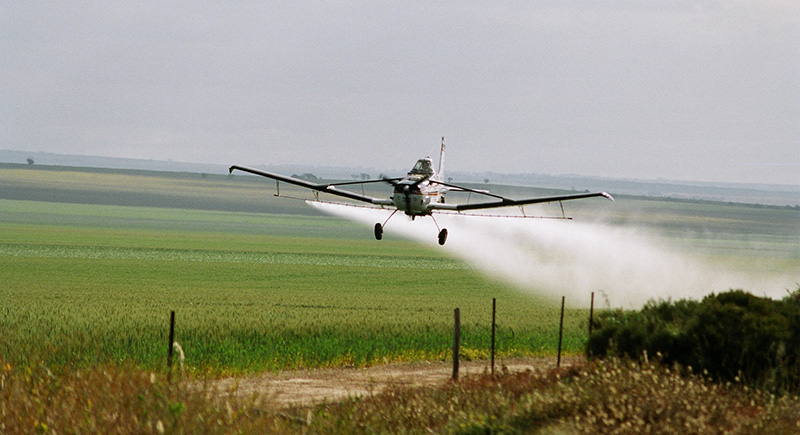Growers nationally will now be able to access a Spray Drift Management Tool (SDMT) that allows for the recalculation of spray drift buffer zones, thanks to support from the Grains Research and Development Corporation (GRDC).
The tool was made available in NSW during 2021 and 2022 as a pilot project, however its availability has now been extended Australia-wide thanks to an Australian Pesticides and Veterinary Medicines Authority (APVMA) permit.
This permit, granted to Grain Producers Australia (GPA), is the result of industry collaborative efforts by GRDC, GPA and the National Working Party in Pesticides Application (NWPPA). It allows applicators to use the SDMT for selected products in cereals and fallow situations.
The extension of the SDMT permit means it can now be used by all Australian grain producers as well as group and aerial pesticide applicators.
GRDC chemical regulation manager Gordon Cumming says the permit and SDMT allows a move away from “worst-case scenarios” currently printed on chemical labels.
“Most labels have a buffer zone statement, which can range from zero to 400m, and everything in between,” Mr Cumming says.

The SMDT allows growers to calculate reduced buffer zones, a move away from 'worst-case scenarios' currently printed on chemical labels. Photo: Evan Collis Photography
“This defines the downwind distance within which pesticide application must not occur between the outer edge of the boom and the sensitive area.
“For example, when spraying a wheat crop with a canola crop downwind, you can now calculate a reduced buffer zone distance with several drift reduction strategies.
“These strategies might include a reduced product rate, using a coarser spray quality, lowering the boom height or only spraying when there is a reduced wind speed present.
“If you punch those things into the calculator, you might find that you can reduce your buffer zone from 200m to 80m, or spray up to the fence line, instead of having to come back another day when the wind is coming from a different direction.
“It’s a reward for best practice if you undertake drift-reduction strategies combined with taking weather conditions into consideration, and it can reduce the unsprayed area you have to leave for another day.”
Mr Cumming says the new permit therefore has significant potential to aid spray efficiency.
“You might plan to do that strip you had to leave as a buffer zone when conditions are favourable, but the weeds might get away on you in the meantime.”
Andrew Weidemann, GPA research, development RD&E spokesperson and Victorian grain producer says the tool simplifies spraying for growers.

Additional spray drift resources are available on the GRDC website. Photo: Evan Collis Photography
"The SDMT effectively reduces between 20-30 plus pages of current label information to a simple and easy to use tool,” Mr Weidemann says.
“We encourage all growers to take advantage of the opportunity to use this tool; especially given the recent focus on spray drift, and the need to ensure we meet best-practice application standards to maintain community trust and access to these products."
In the 2021 and 2022 season, a pilot permit for the SDMT was issued for NSW. Post-expiry of this permit in July 2022, users were surveyed and found that 90% were likely or very likely to use the tool in the future if the APVMA permit was extended.
Following this feedback, and with the support of GRDC, GPA successfully applied to the APVMA for a national permit to increase the SDMT’s use by industry.
This latest permit (PER 93132) allows applicators to access and use a modified version of the SDMT for 37 selected products, in cereals and fallow situations.
When accessing the tool, users must subscribe to APVMA news updates and the pesticides newsletter to ensure they use the latest version of the modified SDMT and are asked to retain a copy of the output to include in spray records.
Both APVMA and GRDC have both stressed the permit does not allow “off-label” use.
The SMDT tool, permit, and instructional video are available on the APVMA website.
For more spray drift resources, please visit the GRDC website.

























































